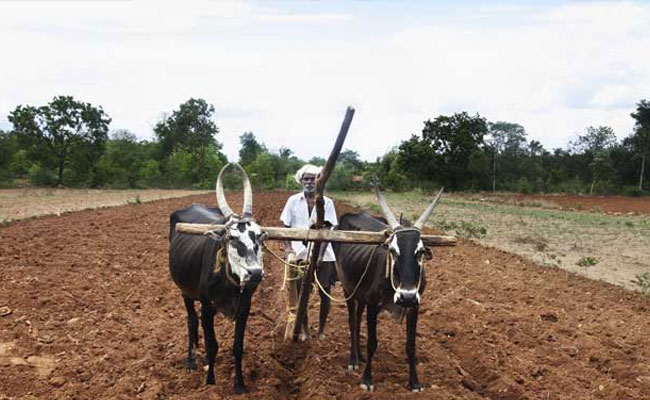Mandsaur, in Madhya Pradesh, which formed the epicentre of farmer’s protests that began last year, is still protesting. Six protesting farmers had died after state police opened a fire on the group. However, justice still eludes their family. To mark the anniversary of the firing angry farmers have planned a 10-day protest in the area. However, after the ten-day strike began, Radha Mohan Singh, Union minister for agriculture and farmer welfare, dismissed it saying ‘organisations with the scant following are resorting to “unusual deeds” to “appear in the media”.
Elections are due this year-end in Madhya Pradesh. Congress President, Rahul Gandhi recently flagged off the party campaign from Mandsaur by holding the Kisan Samriddhi Sankalp Rally. His speech aptly focused on farmers’ issue and how PM Modi’s government has failed them. He addressed farmers’ demands of crop loan waiver within 10 days, justice for the families of farmers killed in police firing and promised that if Congress comes to power, food-processing units will be built in every district so that crops could be taken straight from the field to these units. He acknowledged that the food we eat is due to the efforts of farmers and attacked BJP’s leaning towards rich businessmen instead of poor.
There can be no denying the fact that the last few years have been the worst for farmers all over the country. This year Kisan Long March covered the distance between Nasik to Mumbai on foot in sweltering, difficult conditions. 35,000 farmers joined the March. All India Kisan Sabha led the March and their demands were complete loan waiver, fair price for farm produce, implementation of the Swaminathan Commission’s recommendations, compensation for hailstorm-affected farmers and forest rights.
Agriculture sector forms the major employment for the majority of the country, directly or indirectly, has not fared well in the past few years. In fact, India’s agriculture growth the January to March quarter of 2017-18 dipped to 4.5 per cent as compared to 7.1 per cent in the same period last year. Data also shows that in current prices, the Gross Value Added (GVA) in agriculture and allied activities in 2017-18 was estimated at 4.5 per cent down from 11.6 per cent recorded during 2016-17. This sharp fall in GVA reflects the impact of inflation on farm goods that has seen a consistent fall since 2014-15 due to low farm-gate prices of oilseeds, pulses and cotton. Thus, despite good harvests, farmers have not been able to reap the benefits.
Moreover, data on rural wages recently released by the Labour Bureau shows that rural wage growth of non-agricultural labourers continues to be in the negative territory for the fourth month in the row – wage data now available up to February 2018 shows that the real non-agricultural wages have been declining since November 2017. Even for agricultural labourers – while the real wages have moved out of negative territory after declining for two months, the growth at 0.2 per cent is negligible.
Meanwhile, prices of major agricultural commodities have collapsed, especially sugar and pulses. Farmers’ protests recently saw symbolic dumping produce. Farmers in Banaur, Punjab dumped vegetables on road and milk on the road. In Chitradurga, Karnataka similarly, unhappy with the great drop in prices in vegetables dumped them since the price offered did not even cover the transportation. Similar protests are on in Maharashtra and Haryana and are symptomatic of the larger problem.
A large part of rural distress stems not just from current economic crisis but also from longer entrenched structural problems in the agricultural sector. Agriculture in India remains labour intensive, with low productivity and yield and non-competitive. While access to irrigation has increased it has come at the cost of environmental degradation and subsequent problems. Market linkages are still poor, roads are bad and transportation costs are high. This and lack of proper cold storage contributes to lot of food/crop waste and leads to one of the highest spoilage rates in the world.
The Indian farmer is often operating with little access to credit, information and infrastructure. As a result, there is little planning, high risk-averseness and few incentives for long-term investments. Farmer also gets only a small fraction of the actual price paid by the consumers, as most of it is lost due to inefficiencies and middlemen.
Adoption of better technologies and modern agricultural practices, consistent government policies, better allocation of water resources and greater access to cheaper credit can go a long way in helping the farmer plan and produce better. In the long term land reforms and better rural infrastructure in terms of roads and markets will have a greater impact on the Indian agriculture.


















